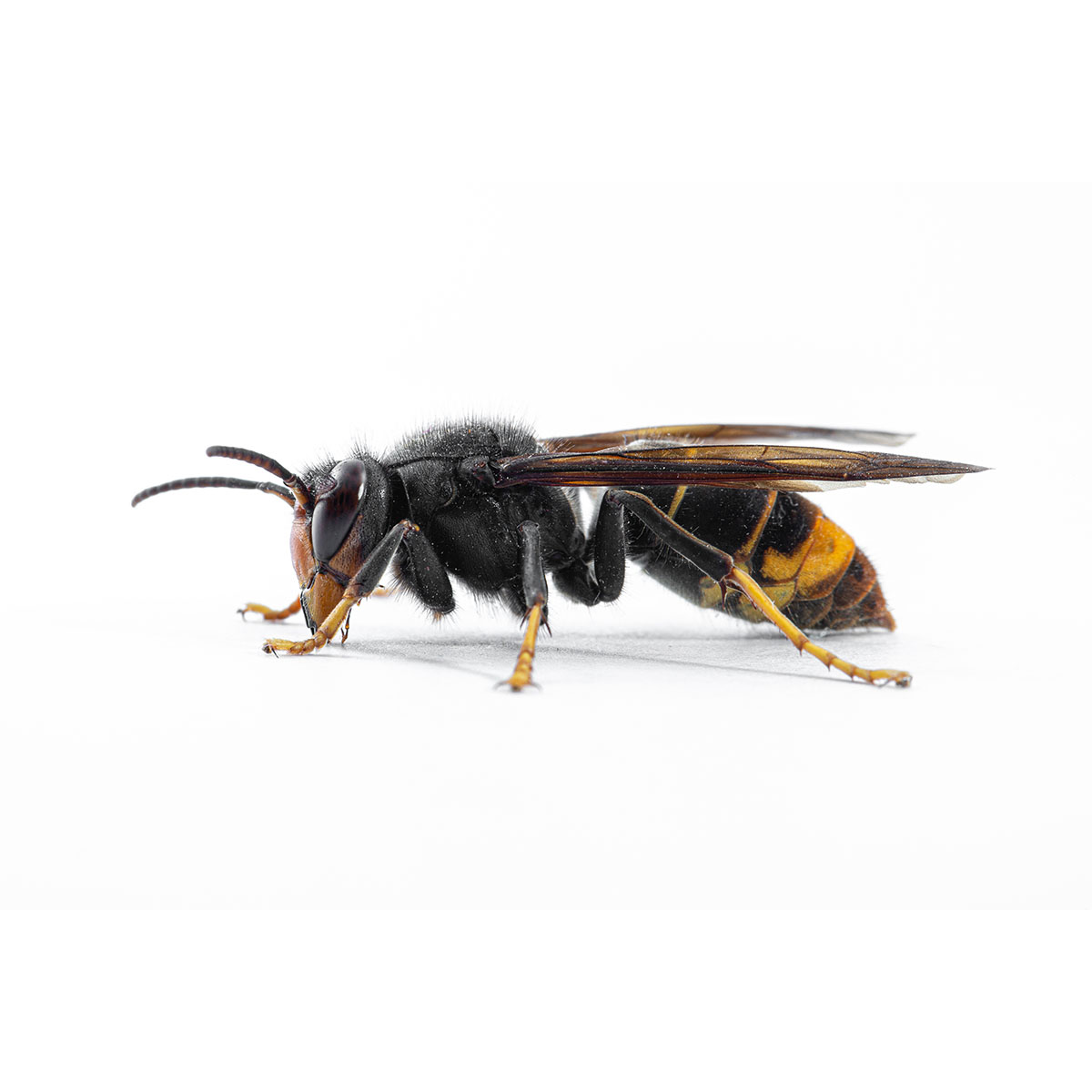
Asian Hornet
VESPA VELUTINA
Identification
Size: Approximately 30 mm. Colour: Orange head and black forehead, entirely black-brown thorax. Larval development: 5 to 10 days. Development cycle: About 10 days. Shelf life: A few weeks. Fertility: About a hundred eggs. Nesting: the nest is spherical in shape, it can reach about fifty centimetres in diameter. The colony is founded relatively late, in the course of June, and only has a few hundred individuals.
Living areas
As natural dens such as tree barrels are becoming increasingly rare, hornets often seek compensation in the human environment. Old barns, terrace roofs and wooden balconies are suitable, as are niches in the attics and roller shutter boxes. The Asian hornet builds its spherical nests at very high heights in trees, out of sight, easily over 12m high.
Feeding
To feed its brood, a well-developed colony can consume 500g of insects per day (flies, wasps, grasshoppers, dragonflies…). Adult workers feed on plant juices, fruits, abandoned meat materials.
Nuisances
-Very serious allergic reactions (anaphylactic shock), sometimes fatal as well, occur in some cases.
– Bites are just as dangerous for domestic animals as they are for humans.
– Food degradation and pollution.
– Disruption of the living environment, phobia of insect proliferation.
Life cycle
In spring, a female, fertilized the previous year, begins building the first cells of the nest, lays the first eggs and raises the larvae that emerge. After nymphosis, these larvae become sterile workers who continue to build the nest and supply during egg laying. At the end of the summer, the eggs give fertile males and females that will be fertilized. At first cold, the nest collapses and the entire colony disappears; only fertilized females overwinter in a natural shelter.
